How to Use Multimeter in Tamil | Beginners Guide | Multimeter for Beginners
by Anto B in Circuits > Electronics
4389 Views, 5 Favorites, 0 Comments
How to Use Multimeter in Tamil | Beginners Guide | Multimeter for Beginners
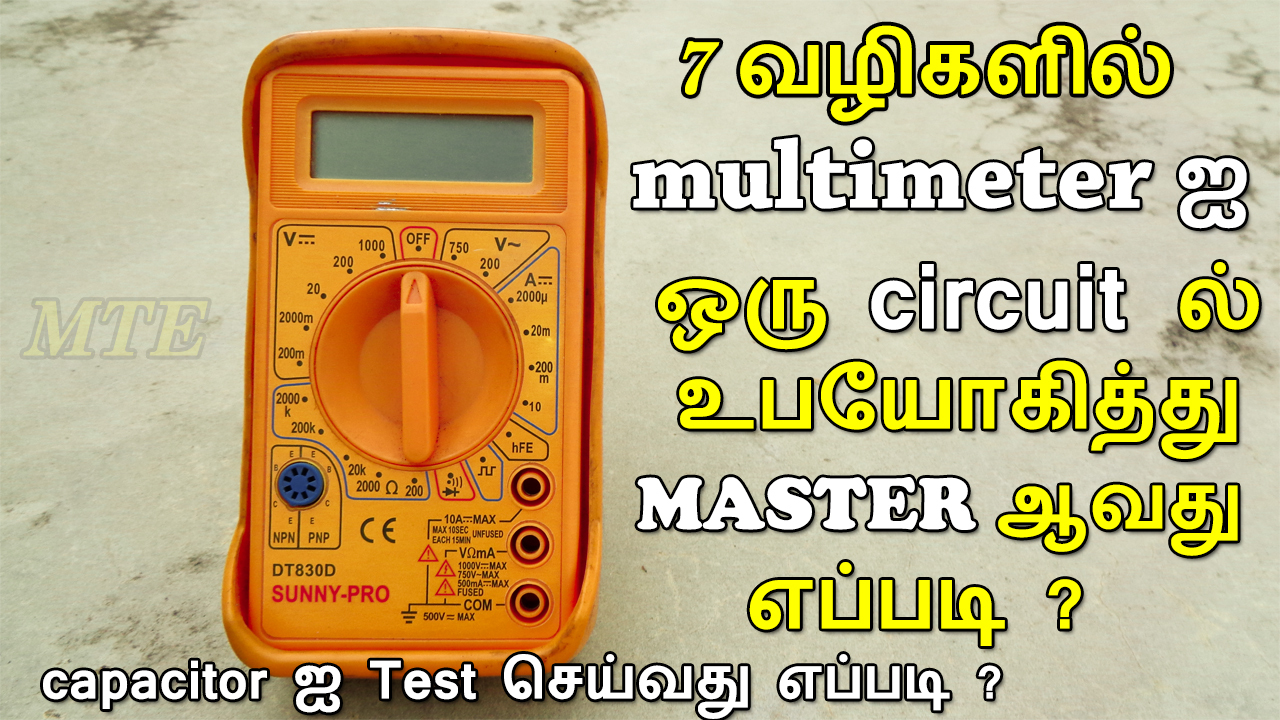
Hello Friends, In this tutorial, I have explained how to use multimeter in all kind of electronics circuits in 7 different steps such as
1) continuity test for trouble shooting hardware
2) Measuring DC current
3) testing Diode and LED
4)Measuring Resistor using multimeter
5) Testing capacitor in a circuit
6) measuring AC voltage in house
7) Measuring Load current in a hardware
I have published an youtube video with my mother tongue TAMIL. If you wish you can click the link below and watch the video.
Supplies
Multimeter, 1k resistor, diode, DC motor, +12v adaptor
Testing Multimeter Probe
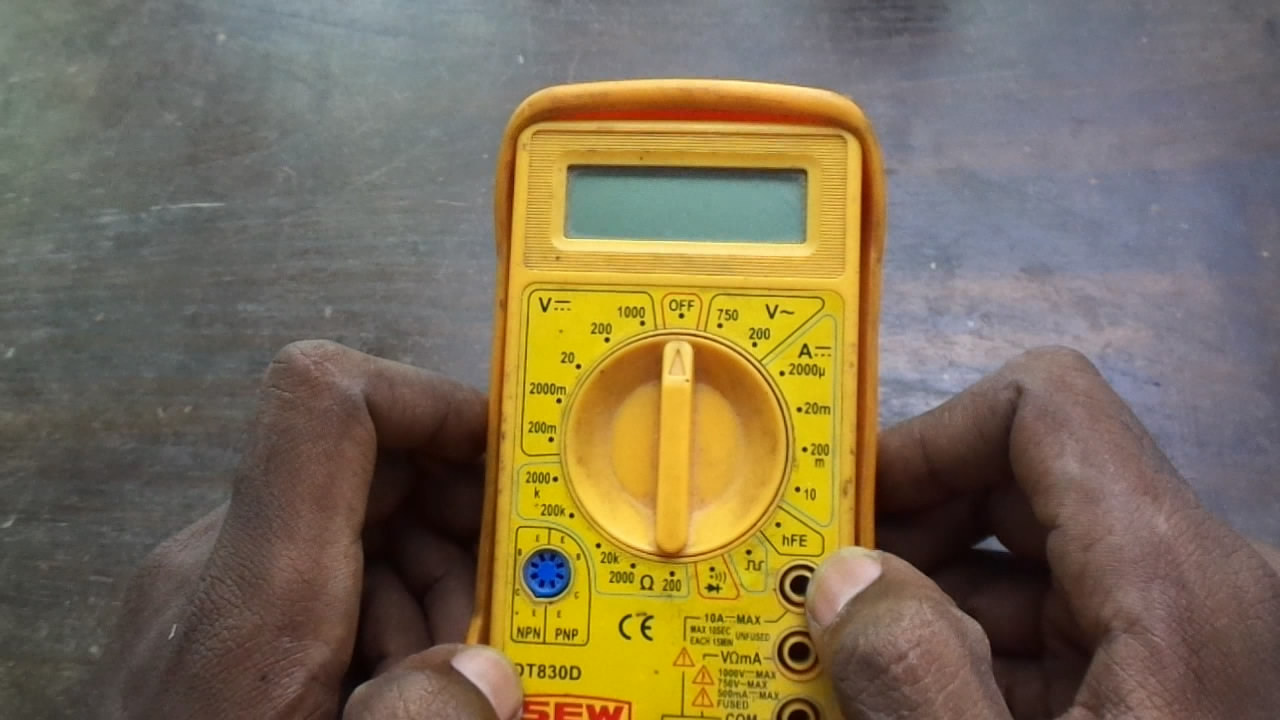
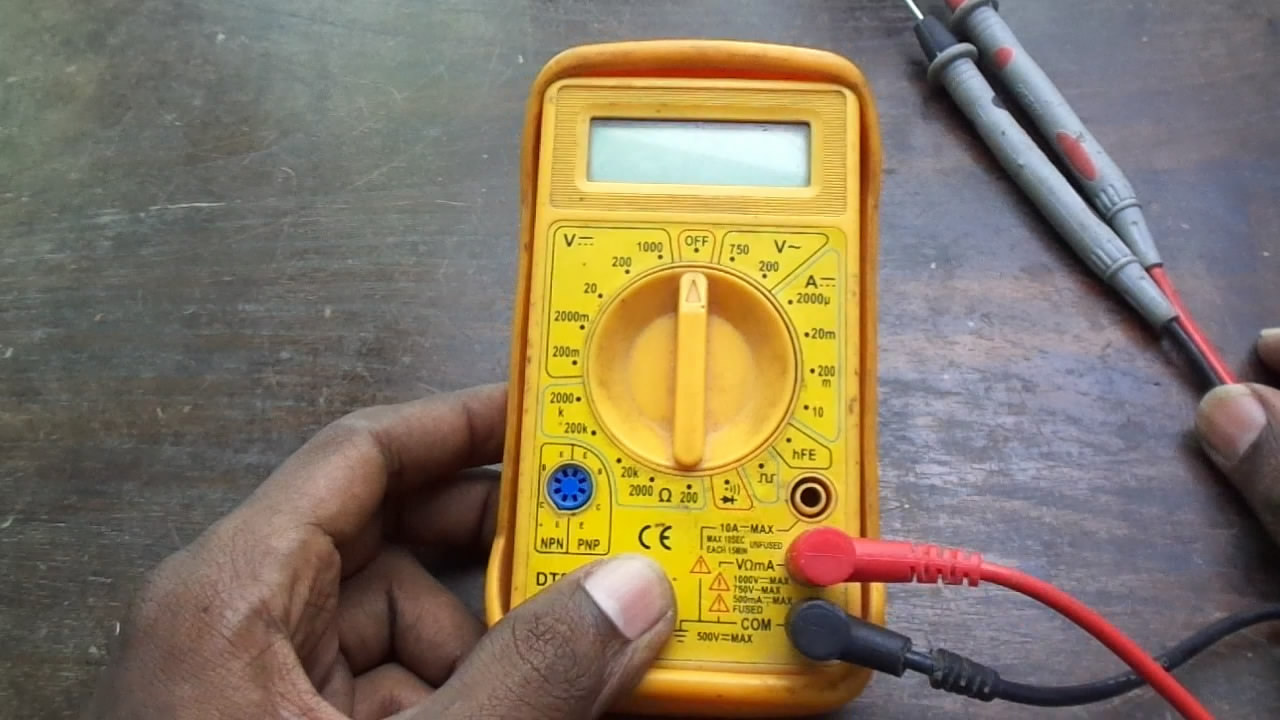
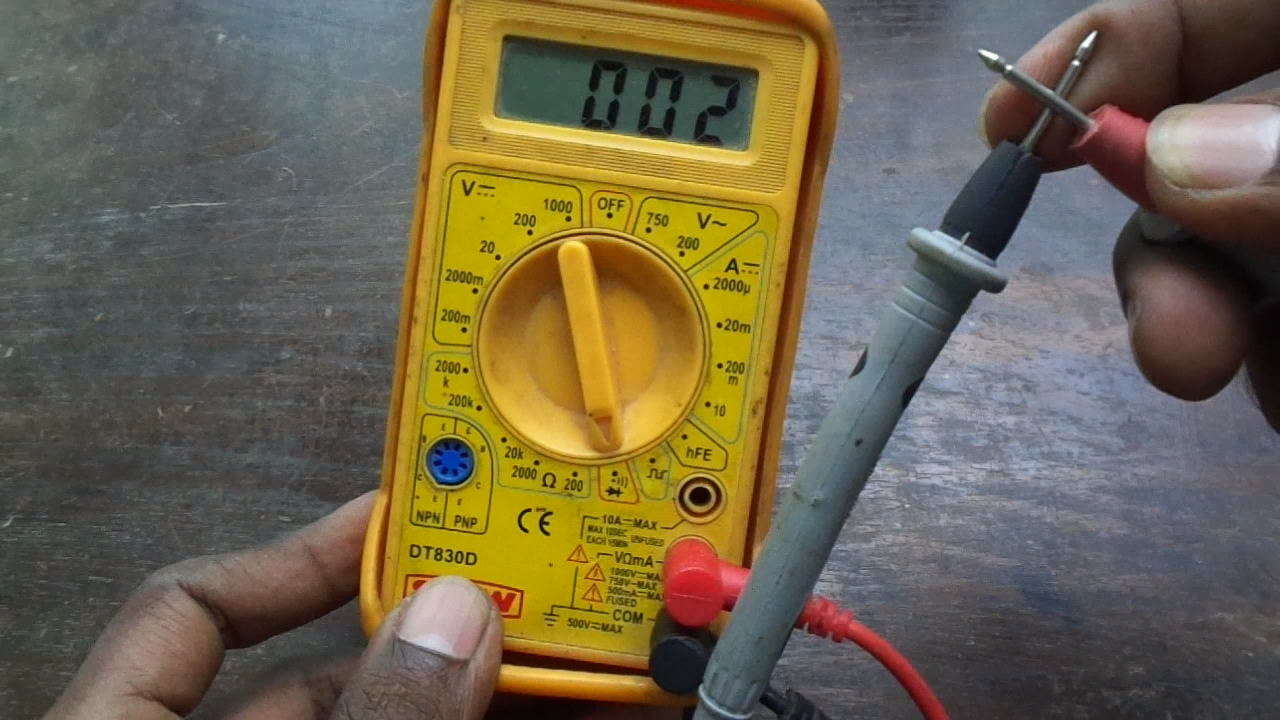
This is the first step to test the multimeter. Connect the red probe in V and black probe in ground. Tune the multimeter to diode symbol as shown in the image.
Now touch the both probe each other. Now you can able to hear the buzzer sound. So that the probe is perfectly connected to the multimeter.
Continuity Test in the Circuit Tracks
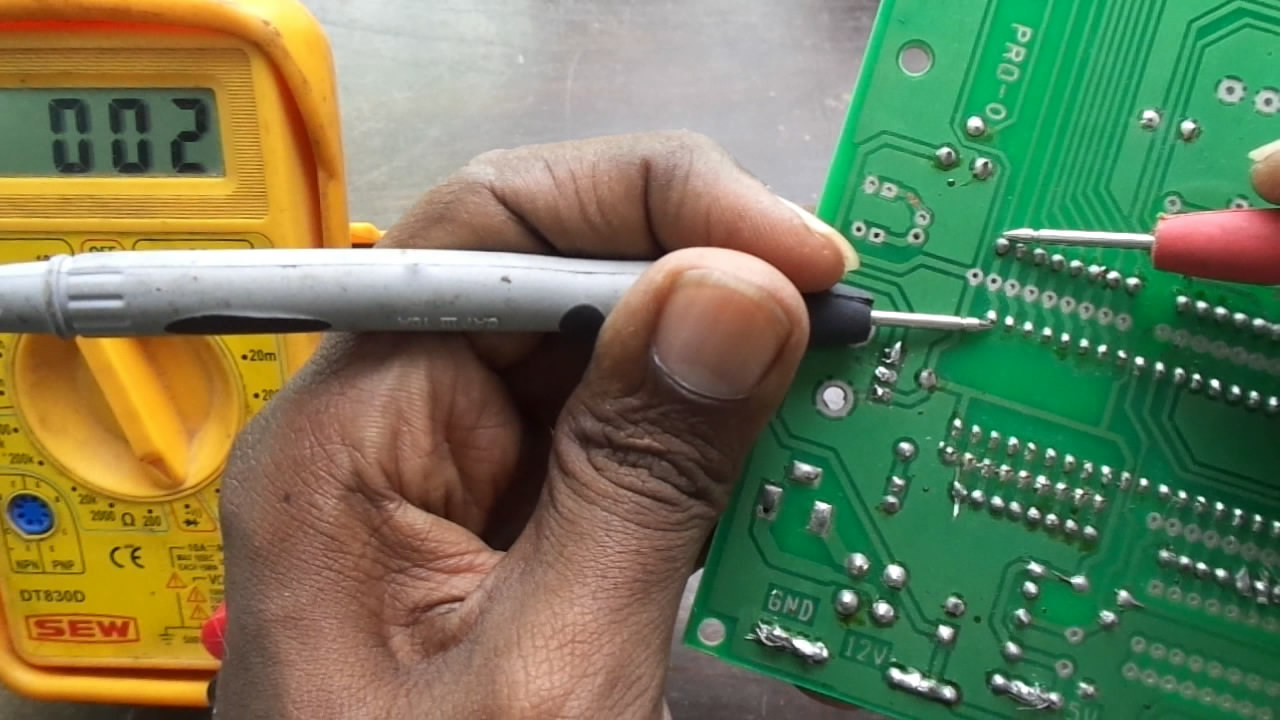
Now take a PCB board. Now you can test the tracks on the board by touching the probe in the both end of the tracks. If you hear the buzzer sound, the tracks are connected, other wise, you are testing the wrong track or the track is burned somewhere else.
Testing DC Voltage
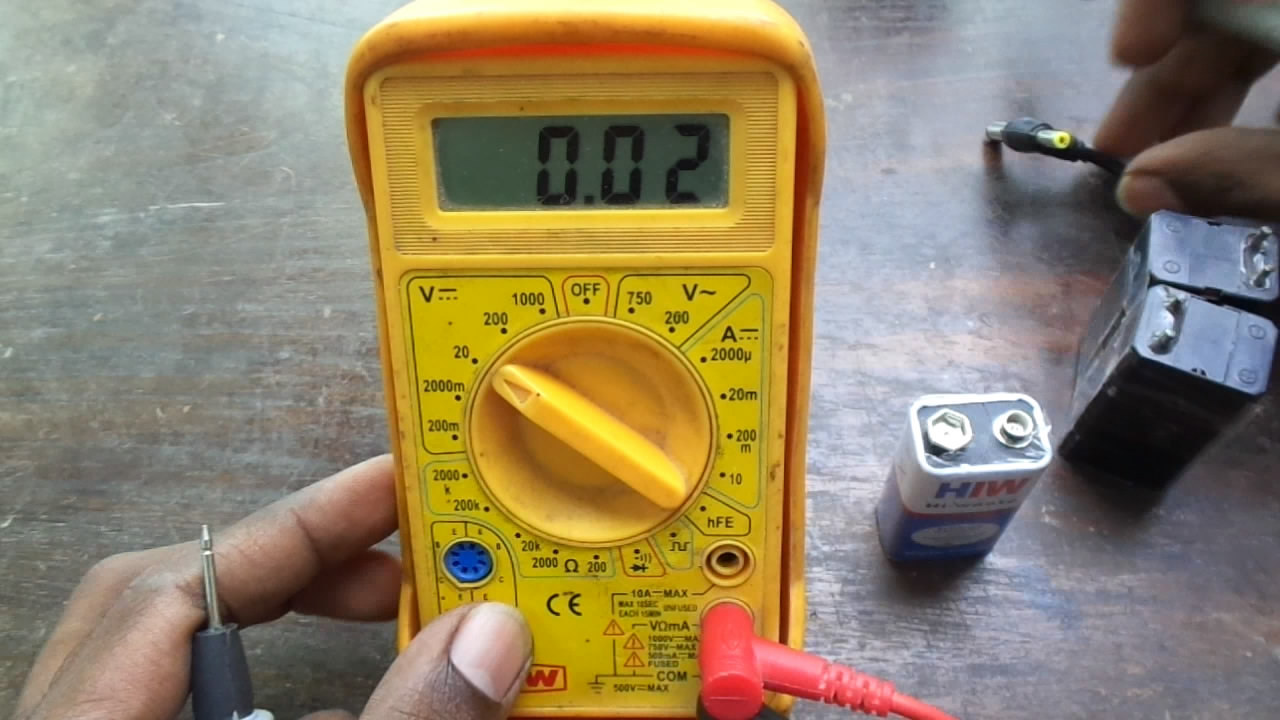
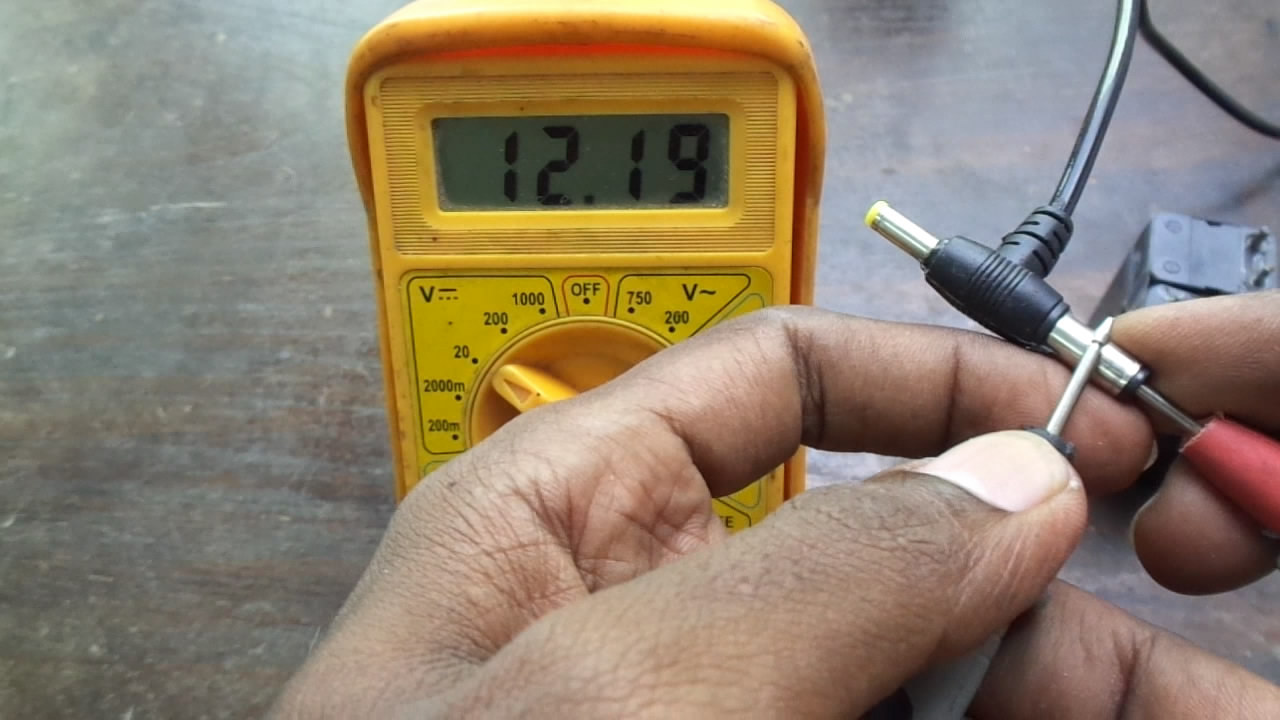
Change the multimeter switch to the DC volt menu. I have tuned to 20V, because i am going to test a +12v DC power supply. If you want to test the power source more thanl +20v tune it to 200 or 1000v DC.
I have connected the positive of the probe to the positive side of the DC pin and ground probe to the negative of the DC pin. I have observe +12v out on the multimeter. Similarly you can able to measure DC voltage using the multimeter.
Testing Diode and LED
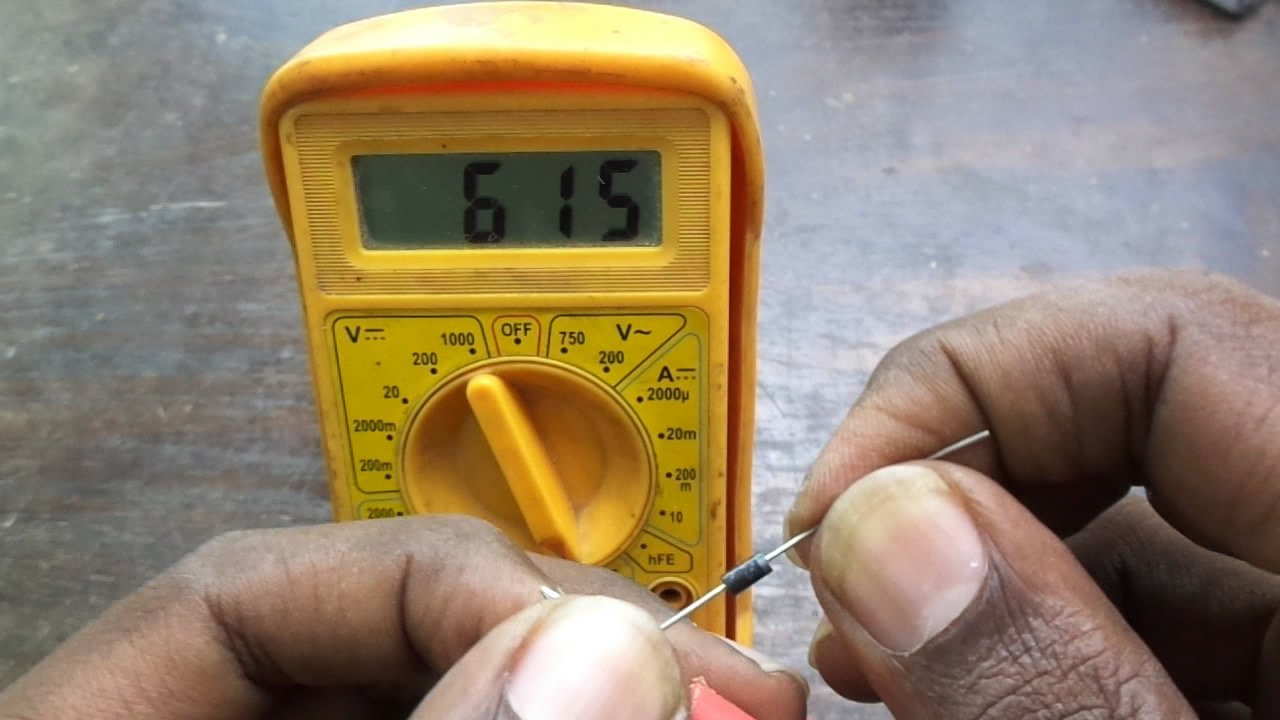
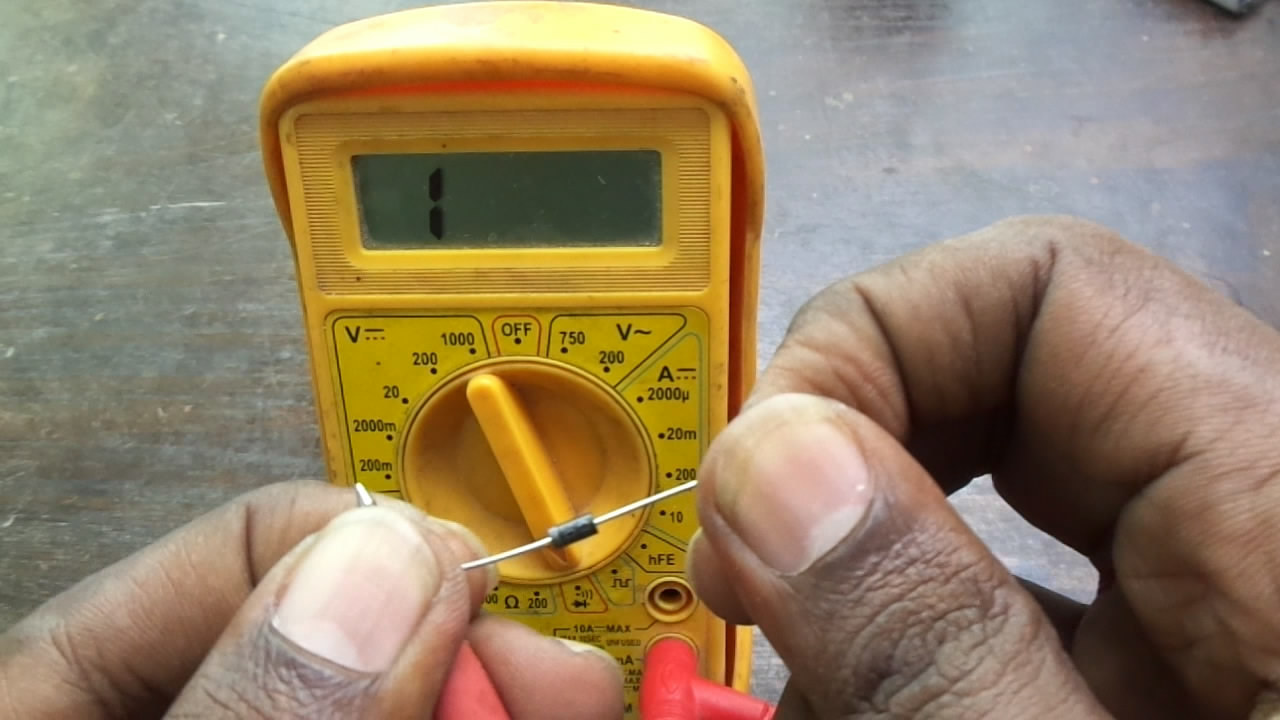
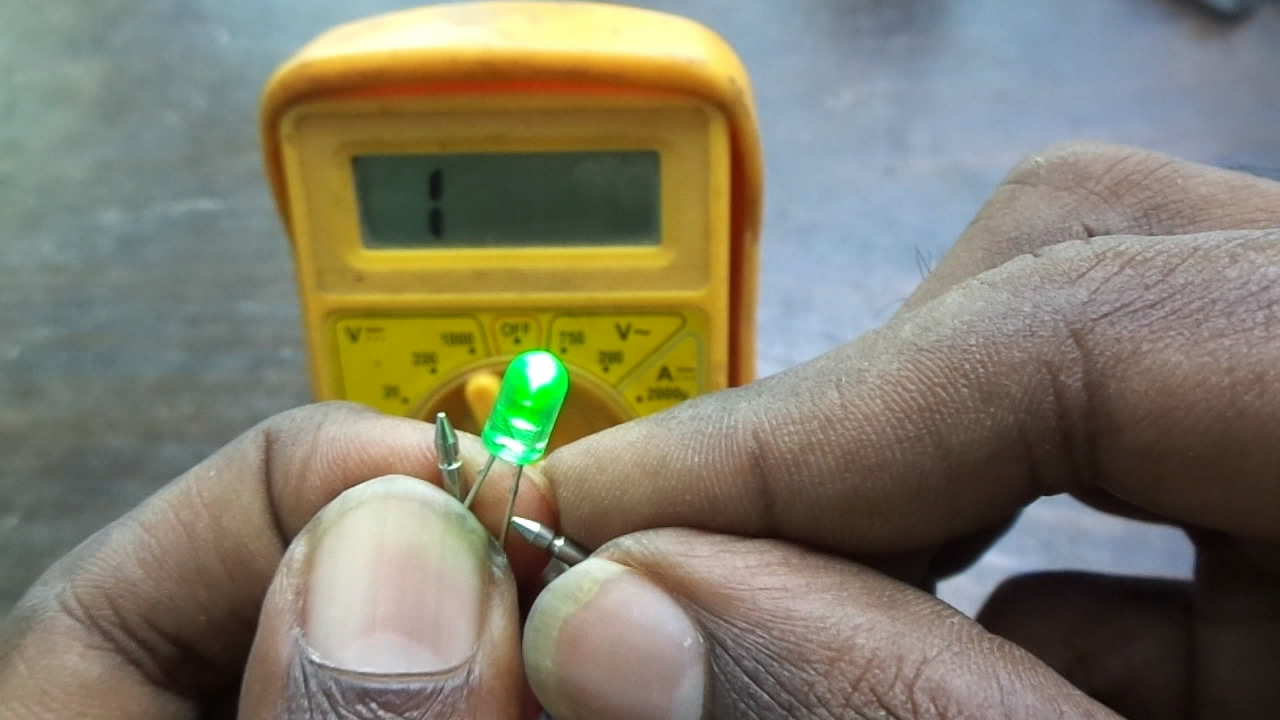
Tune the multimeter to the continuity test (diode symbol). Now connect the diode anode terminal to the positive probe of the multimeter and cathode to the negative probe. Now you can observe some resistance reading on the display of the multimeter. Now interchange the terminals, you can observe no variation of values in the display. so the diode is working fine.
Similarly to test an LED using multimeter, you can connect the anode terminal to the positive probe of the multimeter and cathode to the negative probe. Now you can observe the LED will glove. If the LED does not glow, the LED got damaged. In this way you can test the diode and LED
Testing Capacitor Using Multimeter
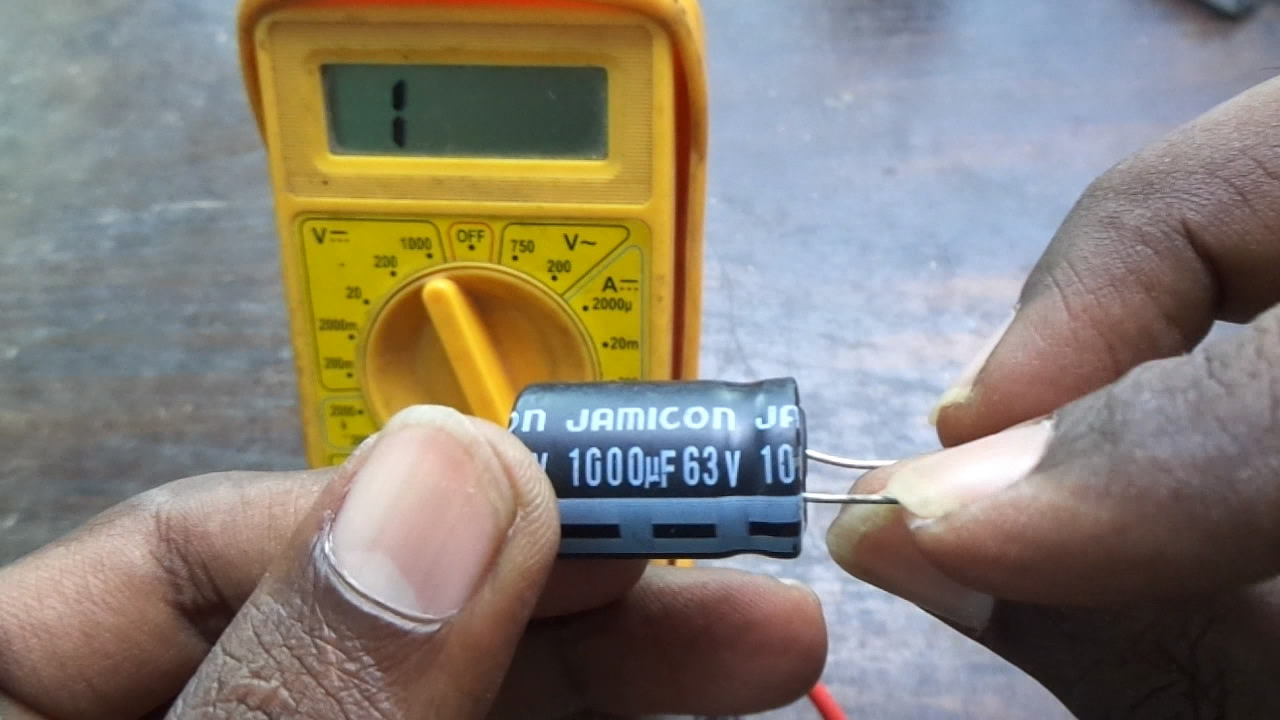
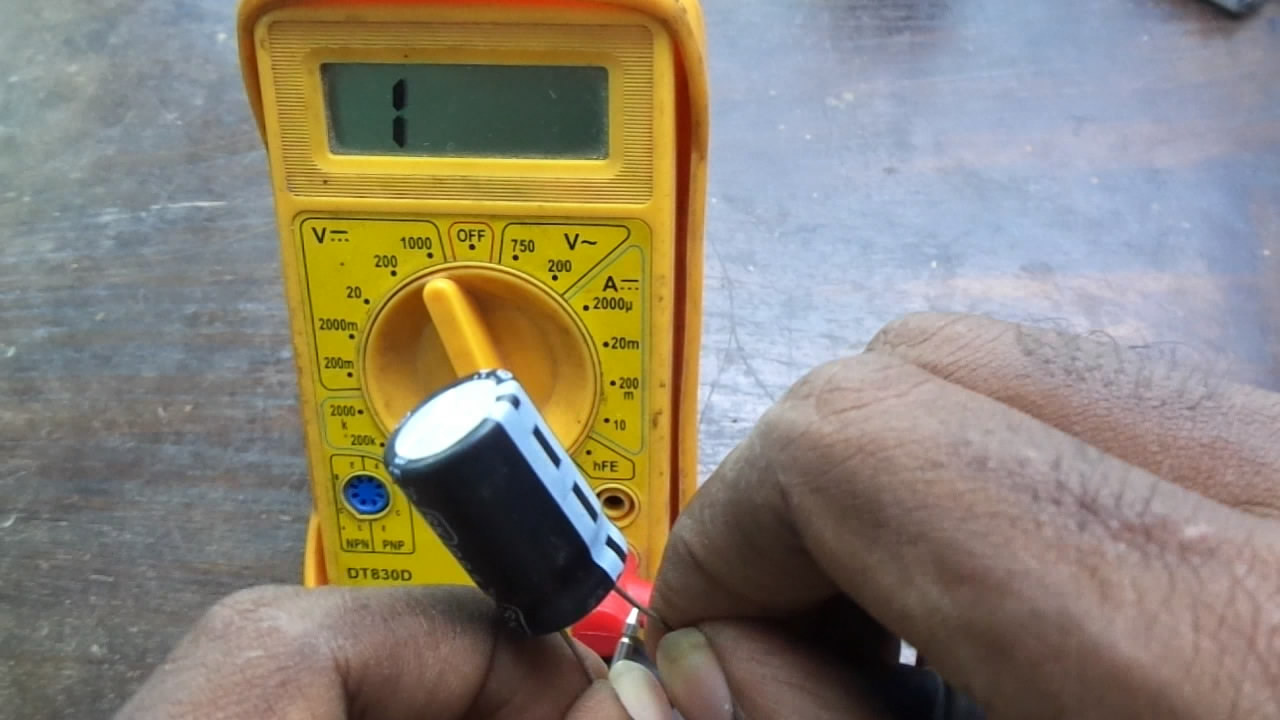
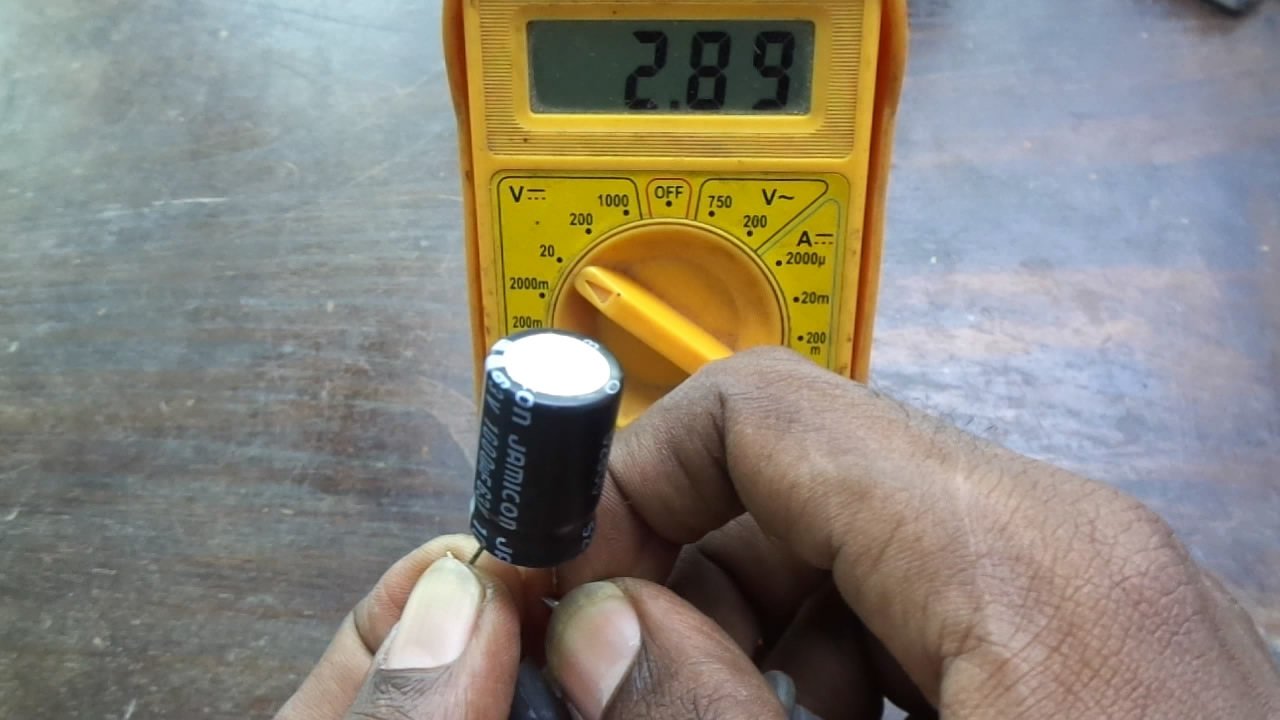
To test a capacitor, i have tooked 1000uF capacitor. Now tune the multimeter to the continuity test (diode symbol) connect the positive probe of the multimeter to the positive terminal of the capacitor. similarly connect the negative probe to the negative terminal of the capacitor. hold it for few seconds. Now the capacitor will charges automatically. after a few seconds, change the multimeter menu to 20V DC as i shown in the picture. Now you can observe some voltage will discharges from the capacitor. If the voltage discharges, the capacitor works fine.
Measuring Resistor Values
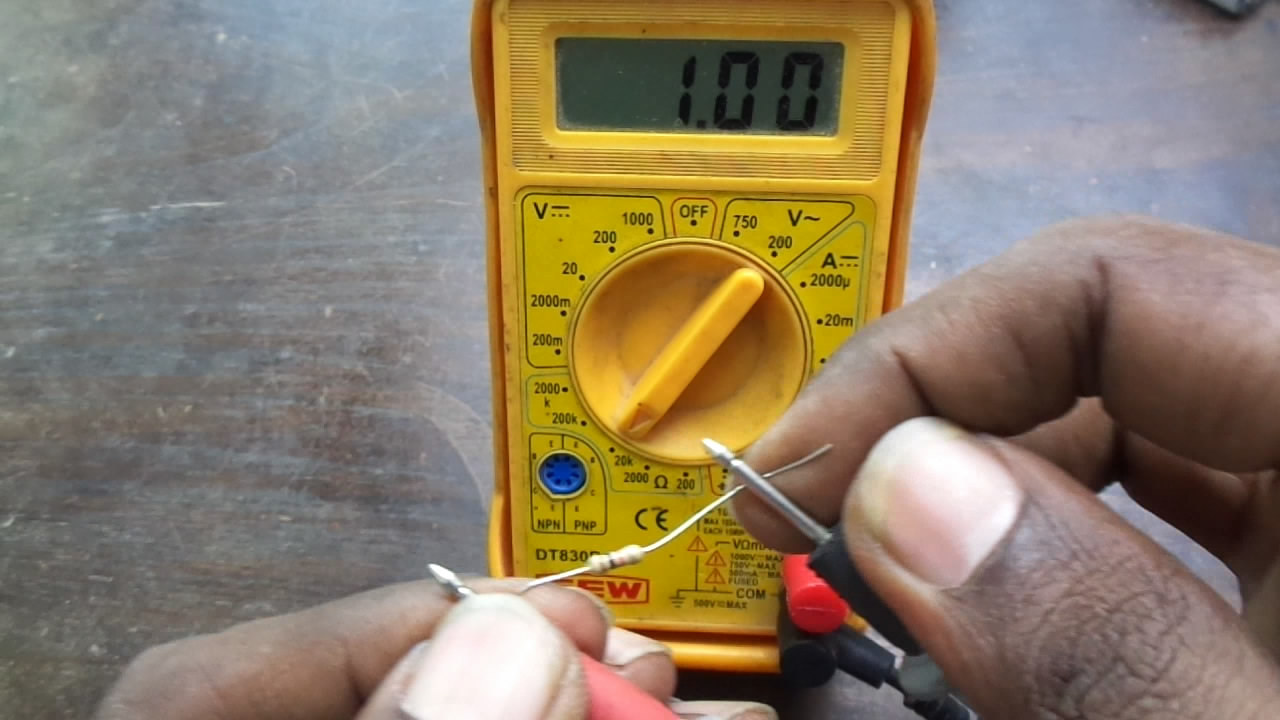
To Measure the unknown resistor value, tune the multimeter to the resistor section. I ;have measured 1K ohms. So i tuned to 20K and connect the resistor to both the end of the probes. You can observe the value of the resistor on the display. As my resistor value 1K is displayed on the multimeter.
Measuring AC Current
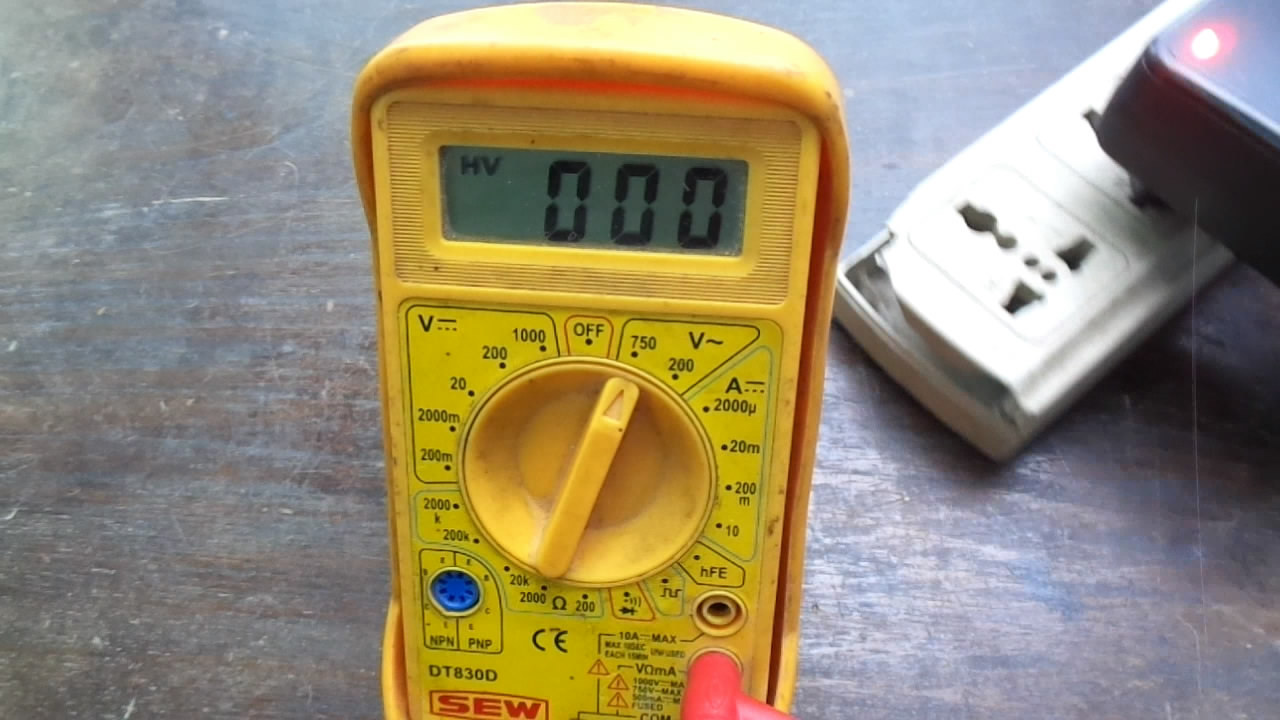
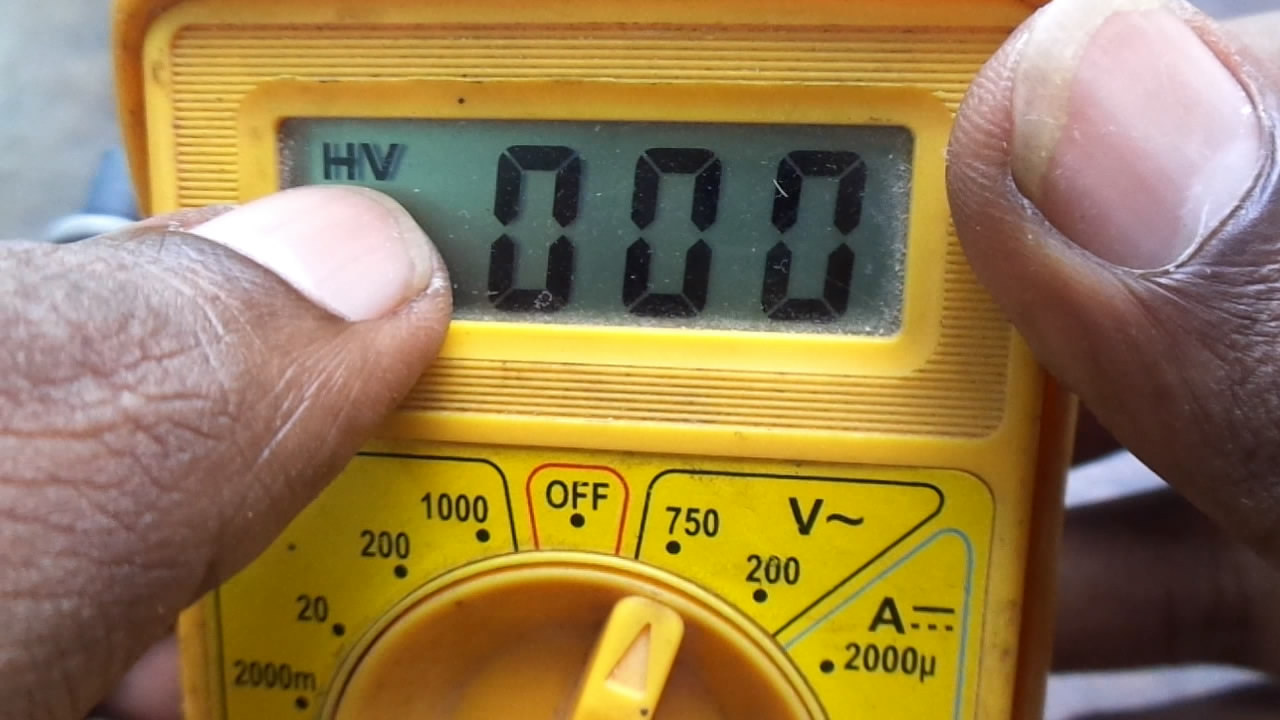
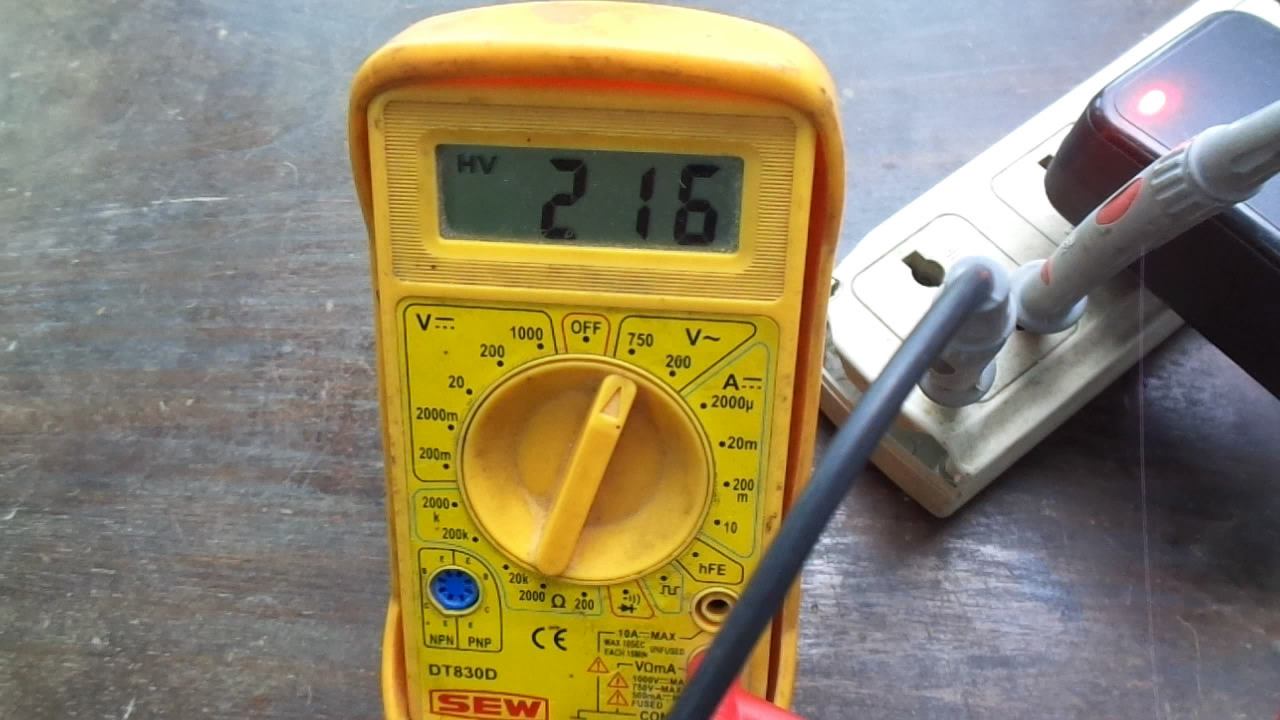
Tune the multimeter to AC menu. I have tuned to 750v. You can able to see the indication as HV (heavy voltage) in the display. connect the probe to the AC plug. now you can able to read the AC voltage on the display.
(NOTE: Measuring AC voltage is too dangerous. Suppose if you never tuned the multimeter to AC menu and measured the AC current, your multimeter will definitely got damaged instantly. so be careful.)
Measuring Load Current
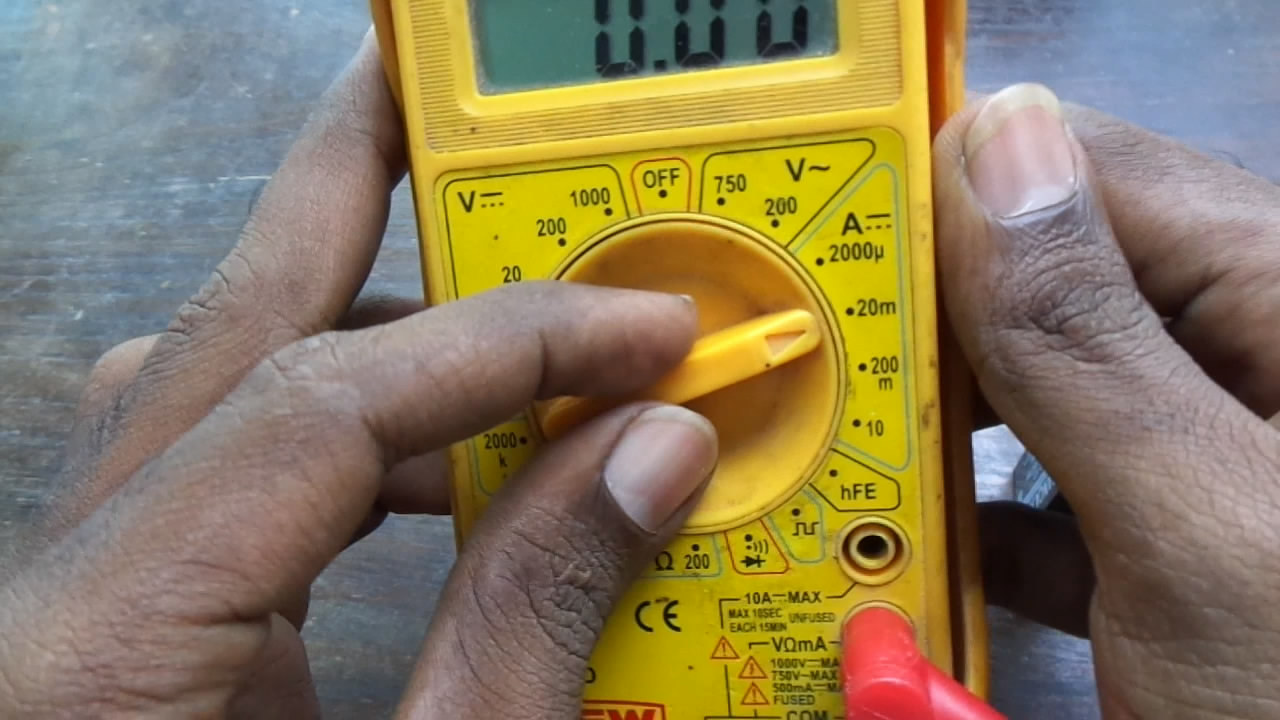
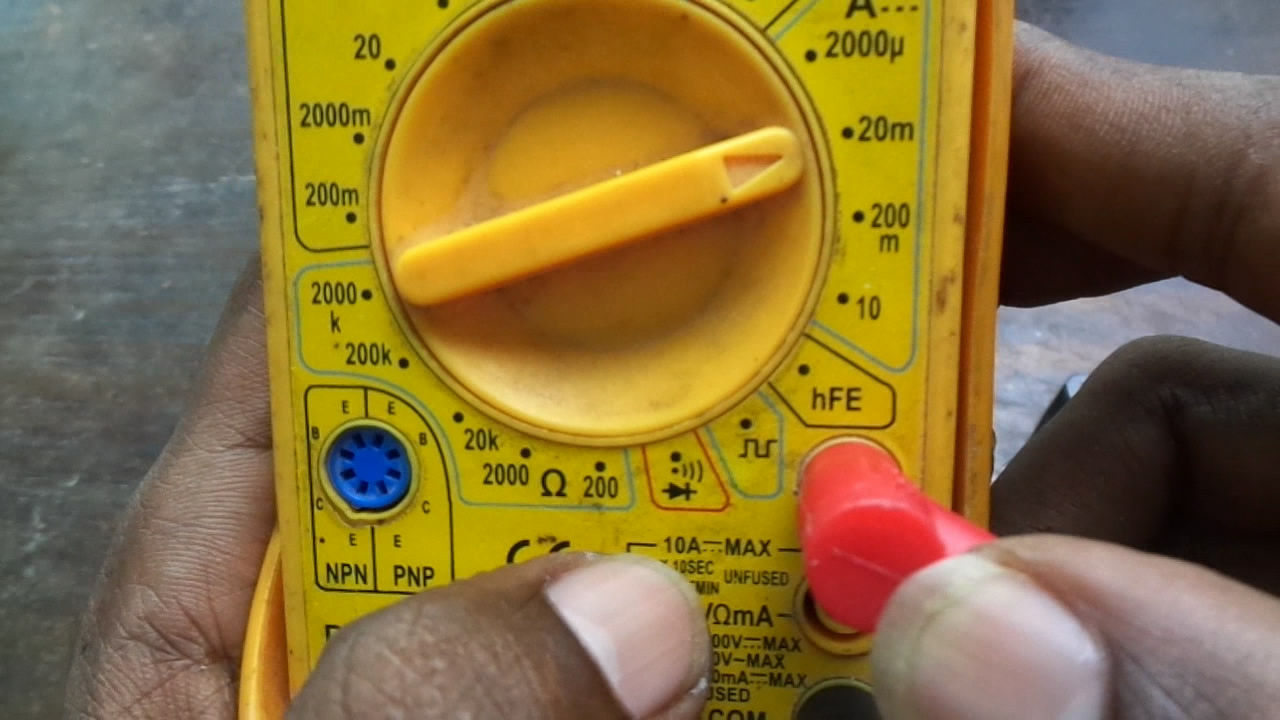
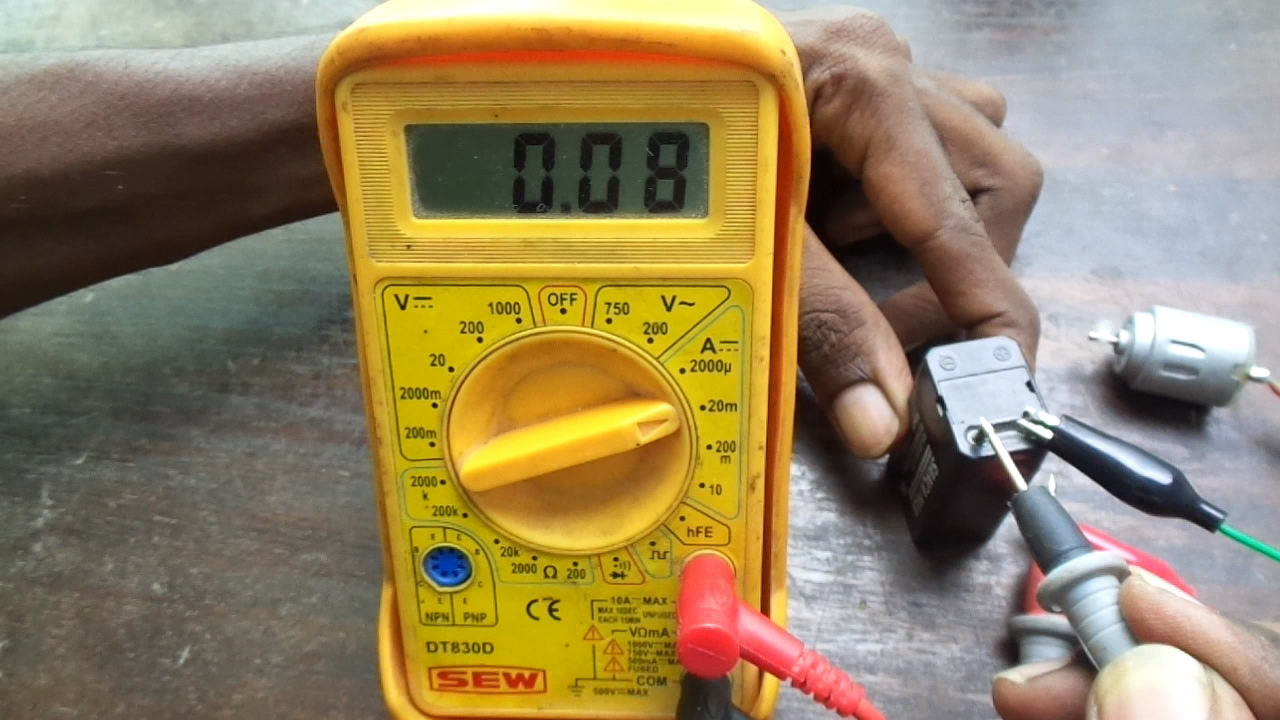
To measure the load current, change the positive of the probe to the 10A hole as i shown in the image and tune the multimeter to current menu.
I am going to test the load current flowing through a DC motor. Now remember a ammeter connection. i have connected the load in a series connection.
positive terminal of the multimeter probe to the one end of the motor another end of the motor to the positive end of the battery. Negative terminal of the multimeter probe to the negative of the battery. now you can able to observe the current flown across the load. In my circuit, its about 0.8mA.
Similarly you can able to measure the load current across the load.
If you have any doubts, watch the live demonstration on my youtube channel
Mission Tamil Electronics
Follow me and give a likes, share, support
Thank you..